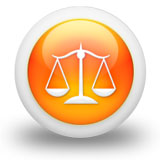Potřebujeme váš souhlas k využití jednotlivých dat, aby se vám mimo jiné mohly ukazovat informace týkající se vašich zájmů. Souhlas udělíte kliknutím na tlačítko „OK“.
ASTM E340-15
Standard Practice for Macroetching Metals and Alloys
Automaticky přeložený název:
Standardní praktiky pro Macroetching kovů a slitin
NORMA vydána dne 1.6.2015
Informace o normě:
Označení normy: ASTM E340-15
Poznámka: NEPLATNÁ
Datum vydání normy: 1.6.2015
Kód zboží: NS-611386
Počet stran: 11
Přibližná hmotnost: 33 g (0.07 liber)
Země: Americká technická norma
Kategorie: Technické normy ASTM
Kategorie - podobné normy:
Anotace textu normy ASTM E340-15 :
Keywords:
alloys, etchants, etching, macroetching, macroetchant, macrostructure, metals ,, ICS Number Code 77.040.99 (Other methods of testing metals)
Doplňující informace
| Significance and Use | ||||
|
3.1 Applications of Macroetching: 3.1.1 Macroetching is used to reveal the heterogeneity of metals and alloys. Metallographic specimens and chemical analyses will provide the necessary detailed information about specific localities but they cannot give data about variation from one place to another unless an inordinate number of specimens are taken. 3.1.2 Macroetching, on the other hand, will provide information on variations in (1) structure, such as grain size, flow lines, columnar structure, dendrites, and so forth; (2) variations in chemical composition as evidenced by segregation, carbide and ferrite banding, coring, inclusions, and depth of carburization or decarburization. The information provided about variations in chemical composition is strictly qualitative but the location of extremes in segregation will be shown. Chemical analyses or other means of determining the chemical composition would have to be performed to determine the extent of variation. Macroetching will also show the presence of discontinuities and voids, such as seams, laps, porosity, flakes, bursts, extrusion rupture, cracks, and so forth. 3.1.3 Other applications of macroetching in the fabrication of metals are the study of weld structure, definition of weld penetration, dilution of filler metal by base metals, entrapment of flux, porosity, and cracks in weld and heat affected zones, and so forth. It is also used in the heat-treating shop to determine location of hard or soft spots, tong marks, quenching cracks, case depth in shallow-hardening steels, case depth in carburization of dies, effectiveness of stop-off coatings in carburization, and so forth. In the machine shop, it can be used for the determination of grinding cracks in tools and dies. 3.1.4 Macroetching is used extensively for quality control in the steel industry, to determine the 1.1 These procedures describe the methods of macroetching metals and alloys to reveal their macrostructure. 1.2 The values stated in inch-pound units are to be regarded as standard. The values given in parentheses are mathematical conversions to SI units that are provided for information only and are not considered standard. 1.3 This standard does not purport to address all of the safety concerns, if any, associated with its use. It is the responsibility of the user of this standard to establish appropriate safety and health practices and determine the applicability of regulatory limitations prior to use. For specific warning statements, see 6.2, 7.1, 8.1.3, 8.2.1, 8.8.3, 8.10.1.1, and 8.13.2. |
||||
| 2. Referenced Documents | ||||
|
Doporučujeme:
Aktualizace zákonů
Chcete mít jistotu o platnosti užívaných předpisů?
Nabízíme Vám řešení, abyste mohli používat stále platné (aktuální) legislativní předpisy.
Chcete vědět více informací? Podívejte se na tuto stránku.




 Cookies
Cookies
